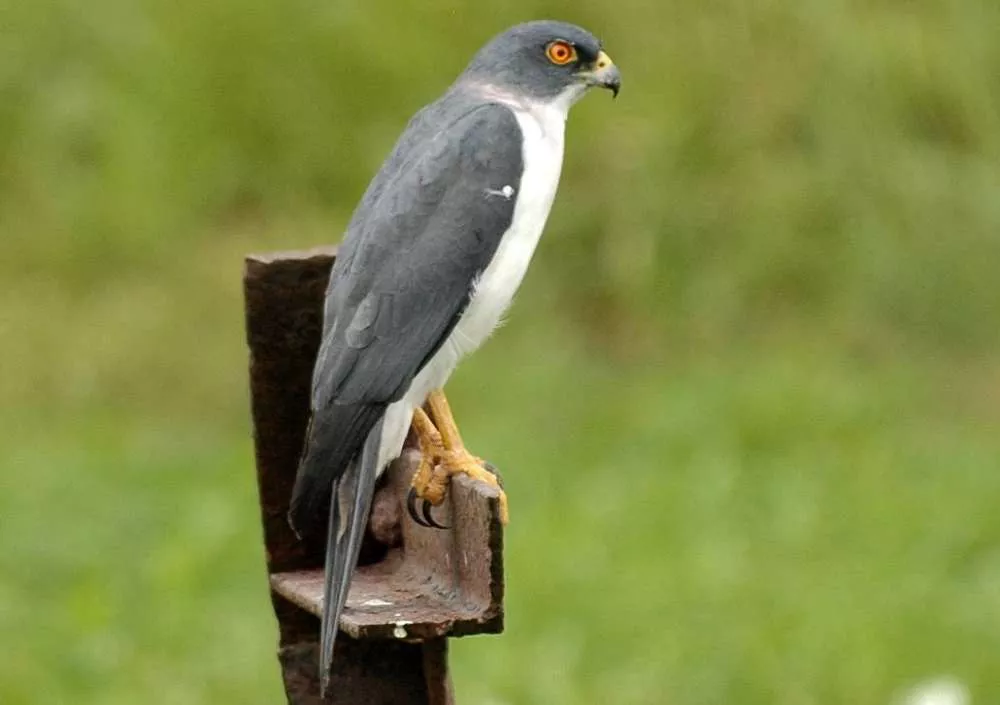The pied goshawk (Accipiter albogularis) is a species of bird of prey in the family Accipitridae. Length: 43 cm, Weight: 170-440 g, Wingspan 60-80 cm.
What does Pied goshawk look like
The pied goshawk is a medium-sized hawk. Has relatively long wings, powerful beak, long legs and claws. A female is 30%-90% larger than her mate. In most subspecies, except the named subspecies, individuals have plumage and a reddish-brown collar of varying sizes covering the nape and sides of the neck. This very distinctive feature allows them to distinguish themselves from Meyer’s goshawk and similar Northern goshawk species. Some other individuals (mainly females) have a black variant with slate black plumage. The iris varies from deep yellow to orange-red, and the waxy body in individuals of the black variety is creamy yellow or sometimes orange. The legs are yellow or yellow-orange. Juveniles are brown, with lighter underparts. Some birds are black sorrel.
Pied goshawk habitat
The pied goshawk is typical of lowland and montane forest birds, but it is not restricted to the densest areas. They are common and appear with increasing frequency on the edges of forests or remnants of forests. Also visit secondary forests, abandoned gardens, and even the outskirts of cities. Dark shapeshifters seem to particularly prefer dense forests and higher altitudes. The habitat of this species generally ranges from sea level to 1200 meters, but can locally reach altitudes of 1800 meters above sea level.
Pied goshawk living habit
Live alone or in pairs. Hunts from an ambush from perch, moving 10 meters every 5 minutes, usually no higher than 1-2 meters above the ground. Also chases prey by hovering low over the forest floor. At the beginning of the breeding season, the males put on a large aerial display. These include circular flights, dizzying dives and “skydiving”. During the latter, they perform roller coaster flights and dive descents, much like peregrine falcons.
Outside of the breeding season, the Pied goshawk is silent. The display is accompanied by calls that are not particularly loud. The call “ku-ku-ku” or “ki-ki-ki” is repeated rapidly during the taxi. The female signals her departure from the nest with a falling sound.
Catch birds, chicks, lizards, snakes and also large insects including stick insects. Among the birds, there are mainly passerines, but also Duchess lorikeet, which catch Scarlet-breasted fruit dove from vegetation, small parrots such as Finsch’s parakeet, but rarely chickens the size of poultry.
Distribution area of Pied goshawk
Distributed in Papua New Guinea and the Solomon Islands.
The pied goshawks are native to Oceania. It is endemic to the Solomon Islands and neighboring islands. The distribution range extends from Feni Island to Santa Cruz Island in Papua New Guinea.


 Facebook
Facebook  Instagram
Instagram  Youtube
Youtube 